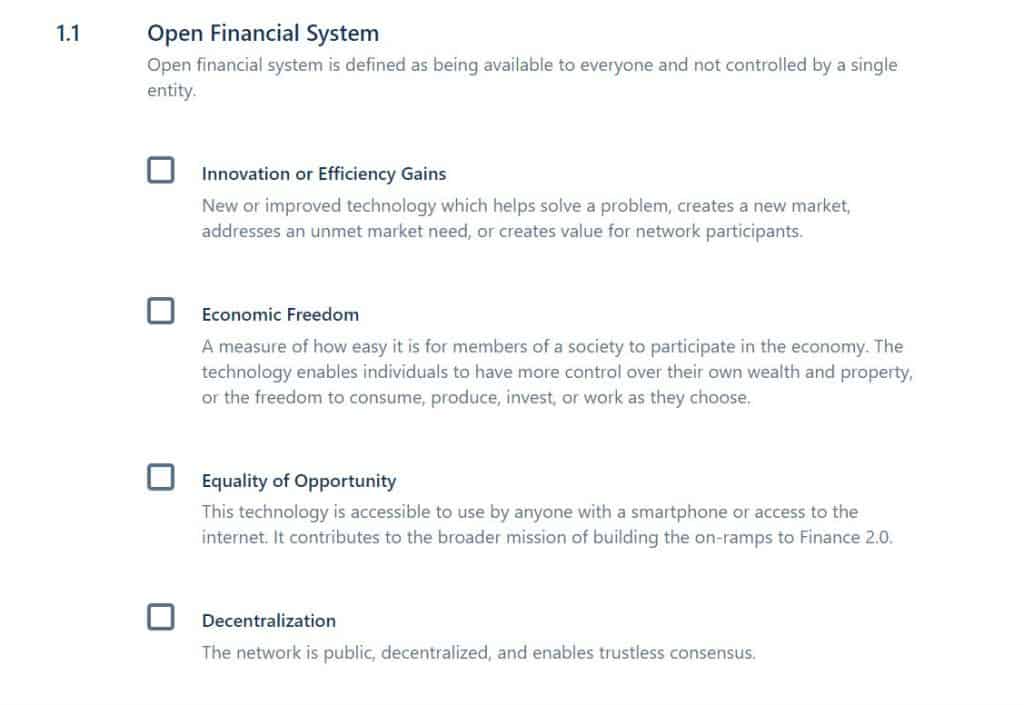First signs of segregating regulatory? Coinbase launches a new listing process
Coinbase announced that they would be launching a new listing policy to aimed at expanding their menu of traded coins on the exchange. Currently, Coinbase features just five coins; Bitcoin, Bitcoin Cash, Ethereum, Ethereum Classic and Litecoin (other coins being explored now include Cardano, Basic Attention Token, Stellar Lumens, Zcash, and 0x).
The new listing process will allow Blockchain companies to fill out a form containing details of their project, the type of digital asset they’ve launched (ERC20 token, standalone blockchain token, or token issued on another blockchain), legal and fundraising structure, etc.
Each application is set to be evaluated against the companies Digital Asset Framework, which details the qualities that Coinbase looks for in a token before it can list it.
The four main qualities are Innovation or Efficiency Gains, Economic Freedom, Equality of Opportunity and Decentralization.

Segregating the crypto market
Coinbase is not only one of the leading cryptocurrency exchanges in the market, but it is also one of the most regulatory compliant. As a US-based exchange, Coinbase regularly conducts KYC/ AML processes, and with the help of Wall Street firm BlackRock, is working to become the first crypto exchange to launch an ETF approved by the SEC.
Keeping this in mind, the exchange will likely have rigorous standards when evaluating which coins can be listed on their platform. Based on their digital asset framework, Coinbase has a bias for coins that are decentralized, have real utility, accessibility and are controlled by the users.
Such a detailed framework will likely serve as a positive filtering tool for the crypto market, which is currently littered with thousands of tokens that lack any real utility or purpose.
For institutional investors or casual members of the retail market, Coinbase serves as their first point of contact into the world of cryptocurrencies. It, therefore, makes sense that this market of new buyers can interact with a menu of tokens that represent the best of what blockchain technology has to offer.
Coinbase is currently not charging an application fee. However, this may change depending on the volume of submissions. “Depending on the volume of submissions, we reserve the right to impose an application fee in the future to defray the legal and operational costs associated with evaluating and listing new assets.”
Binance is another major exchange that has a similar asset listing process. They also have an incubator, which helps develop promising blockchain projects that may one day list their tokens on Binance. The main difference between the two is that Coinbase represents a larger share of the US markets, whereas Binance is more international. In addition to target market focus, Coinbase is focusing on being a custodial service for institutional investors, which opens to doors for larger pools of capital to flow through their exchange in the long run.
With regards to the issue of trading tokens that may be securities, the VP of Coinbase, Dan Romero, has stated that although the regulatory status of tokens still needs clarification in the US, as a global company, Coinbase is taking a “region by region approach with every asset. In the US, we are very much engaged with regulators and are going to make sure any asset we list in the US is compliant with local laws”.
The post First signs of segregating regulatory? Coinbase launches a new listing process appeared first on CryptoPotato.









